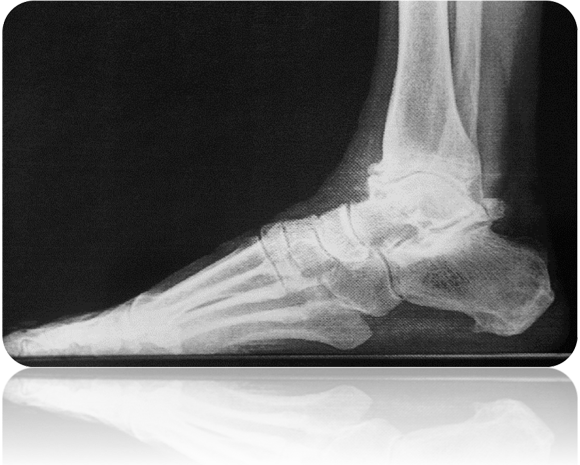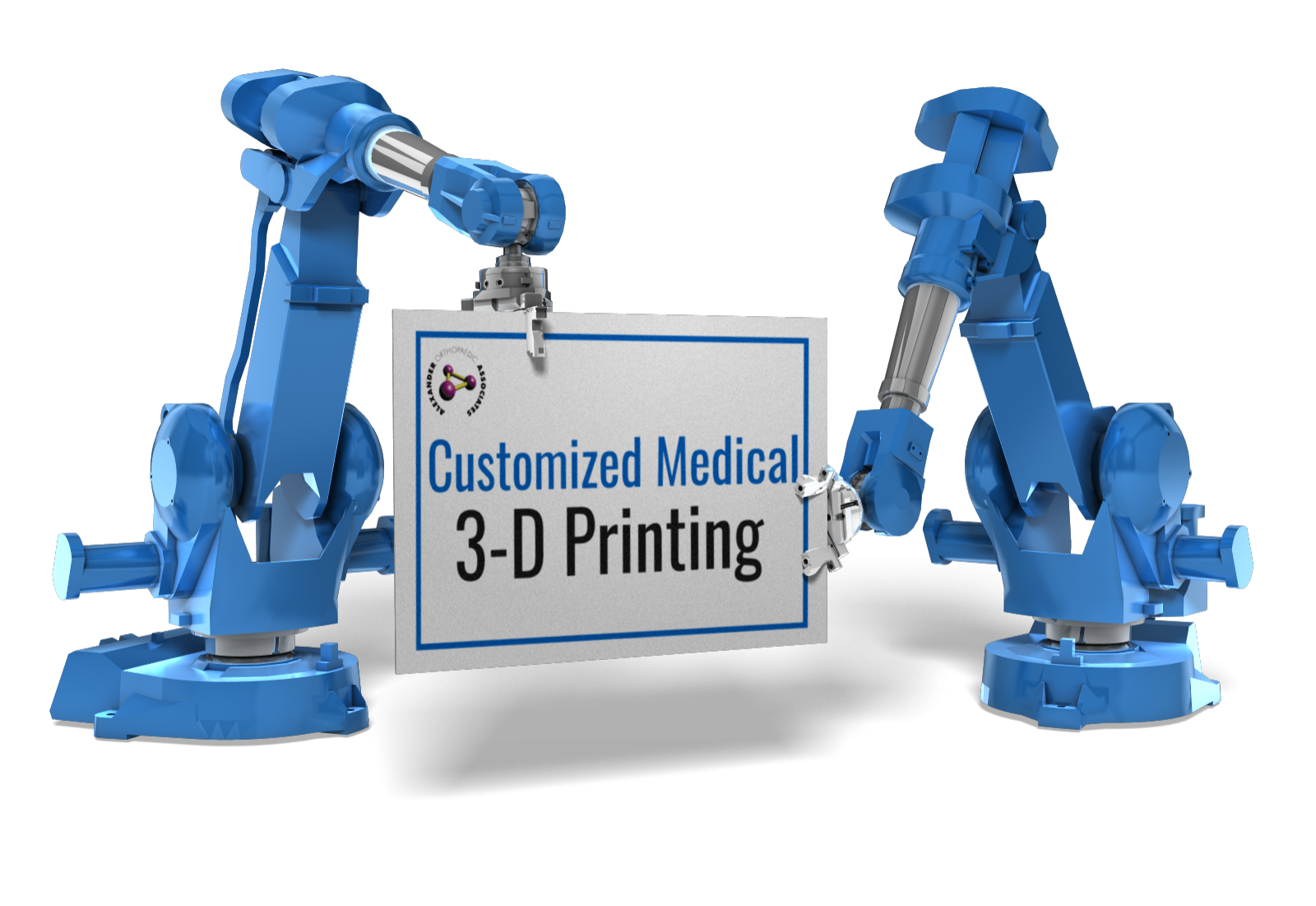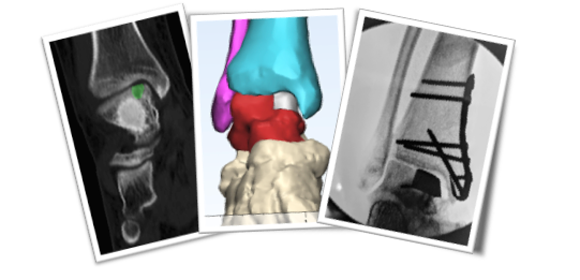What is Ankle Arthritis?
 There are approximately 50,000 new cases of “end-stage” ankle arthritis diagnosed each year. Until more recently, ankle fusion was the only viable option. In the last several years, technology has greatly improved and there are now several options for patients whose lives have been impacted by this condition.
There are approximately 50,000 new cases of “end-stage” ankle arthritis diagnosed each year. Until more recently, ankle fusion was the only viable option. In the last several years, technology has greatly improved and there are now several options for patients whose lives have been impacted by this condition.
Causes of Ankle Arthritis
Traumatic Arthritis: Traumatic ankle injuries, from fractures to recurrent ankle, can lead to altered joint mechanics which ultimately lead to a loss of joint congruity. In fact, it is known that as little of 1 mm of displacement of the talus (the foot bone that articulates with the ankle bones) within the ankle joint can lead to a 40% increase in joint contact pressures which can then set the stage for the cartilage to wear away at an accelerated rate. For this reason it is critical to properly diagnose and restore normal anatomic alignment and functionality immediately following a traumatic ankle injury.

Angular deformities of the ankle such as Ankle Valgus (ankle rotated outward), Ankle Varus (ankle rotated inward), Tibial Recurvatum and Tibial Procurvatum (deformity resulting in either the forward or backwards position of the foot on the ankle) can result after traumatic injury. The more severe the deformity, the faster arthritis in the ankle will occur.
In addition to malalignment following trauma, sheer and crush forces at the time of the initial injury can cause injury to the joint cartilage. Cartilage does not have the vascularity that bones do and therefore does not repair itself the way bones can mend themselves. The death of cartilage leads to degenerative change that usually occurs slowly over time contributing to arthritis in the ankle and chronic ankle pain.
Degenerative Arthritis: Also known as “wear and tear” arthritis, while common elsewhere in the body, does not typically occur as an isolated event in the ankle. Despite having a relatively small surface area, compared to a knee or hip, it has a much lower incidence of primary arthritis without some sort of traumatic event.
With that being said, altered gait mechanics secondary to a mechanical problem elsewhere, whether it be a foot deformity or degraded knee or hip joint can lead to increased “wear and tear” on the ankle which can slowly break down the cartilage surface leaded to degenerative arthritis.
It should be noted that once normal gait is restored with corrective surgery or joint replacement of the main contributing factor for the altered gait mechanics, the localized symptoms at the ankle joint may improve on their own. Occasionally this does not occur and a more definite surgical solution is necessary such as joint preserving stem cell therapy and cartilage replacement, or joint destructive procedures such as an ankle fusion or replacement.
Inflammatory Arthritis: The most common cause of inflammatory arthritis is Rheumatoid Arthritis. While it more often associated with deformities and pain at the distal joints or “knuckles” just behind the fingers and toes, Rheumatoid Arthritis can involve the rearfoot and ankle complex.
Ankle Arthritis Symptoms
Chronic ankle pain is the most common complaint from patients. Other post traumatic ankle arthritis symptoms include swelling, stiffness, grinding or clicking sensations from within the ankle joint, pain in the adjacent joints such as the knee or rearfoot, changes in foot alignment or appearance, achiness in the joint even when it is not in use, and difficulty finding comfortable shoes.
Patients also typically report a significant impact on their quality of life and are no longer to do activities that they once enjoyed such as exercising, walking, running, going up or down stairs, court activities such as basketball, tennis or racquetball or other high impact activities, as well as, walking on uneven surfaces such as hiking, getting in and out of sand traps or walking on the beach.

Diagnostic Testing
While clinical findings and history are often enough to make a proper diagnosis, X-rays are often the mainstay of diagnostic testing and can tell a lot about the overall condition of the joint. This also allows the surgeon to assess the degree of arthritis in the ankle and measure any deformities that may have an impact on the prognosis or potential treatment options. CT scans, MRI, and/or bone scans are sometimes ordered by the surgeon to better evaluate the integrity of the subchondral bone, cartilage, ligaments and tendons or to rule out infection.
Some of the newer cutting-edge techniques such as anatomy specific deformity correction using custom made 3-D printed titanium wedges or partial ankle replacements or total ankle replacement with patient specific cutting guides (Wright Medical Prophecy guidance for their INBONE and INFINITY Total Ankle Joint Replacement Systems) utilize special 3-D reconstructed CT scans.
Ankle Joint Replacement Versus Ankle Fusion
End stage arthritis of the ankle joint can be a debilitating condition. In the past the only really good treatment option was with either bracing or a surgical fusion of the ankle joint as joint replacements were very unreliable.
Over the past several years, there have been many advancements made in the area of ankle joint replacement. There are now many FDA approved devices that have contributed to the more recent success of ankle replacement as a good alternative to fusion.
While ankle joint replacement surgery potentially has a higher complication rate compared to fusion, more recent studies have shown that ankle joint replacement patients tend to have higher satisfaction scores when it comes to their overall quality of life after the surgery.
For more information regarding this potentially life changing surgery, please contact us to set up a personalized consultation.
Customized Partial Ankle Replacement
Technology has advanced at an incredible pace over the past several years. Advancements in materials, imaging and 3-D printing have made what used to be impossible...possible. In the recent past, there were very few options for failed ankle joint replacement where only one component of the implant has lost its attachment to bone. There were also very few options for arthritic ankles that only had wear in a localized part of the ankle besides complete joint destructive procedures such as fusion or total joint replacement.
 Today, thanks to several companies who now offer customized 3-D printed implants based on patient specific advanced imaging, we now have a number of exciting customized options for the reconstruction of complex disorders of the ankle joint including the salvage of existing total ankle joint replacements, regardless of the design and now have the ability to partially replace a portion of the diseased ankle, leaving the door open to future treatments including total ankle replacement.
Today, thanks to several companies who now offer customized 3-D printed implants based on patient specific advanced imaging, we now have a number of exciting customized options for the reconstruction of complex disorders of the ankle joint including the salvage of existing total ankle joint replacements, regardless of the design and now have the ability to partially replace a portion of the diseased ankle, leaving the door open to future treatments including total ankle replacement.
